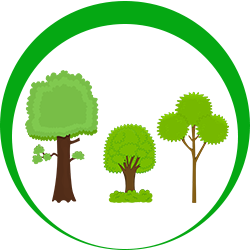The Monster Mash Lesson Overview

The students will model the process of protein synthesis and then model how those proteins result in phenotypic changes. Students will also be able to explain the function of models in science. Students will explore how variations in DNA sequences produce varying phenotypes. Students will complete transcription and translation of DNA and RNA and then determine phenotypes produced based on amino acid sequences while completing hands on activity. During this lesson, students will create a factious organism by rolling a dice to determine which DNA sequence it will receive. Students will then perform transcription and translation. Finally, students will determine the phenotype of the organisms by comparing its amino acid sequence to a key that will be provided. Lastly, students will create a picture of the fictitious organism.
| Duration Two Class Periods |
Setting Classroom |
Grouping Groups of 2 |
PTI Inquiry 3.4, 5.2, 5.3, 5.8, 7.2, 7.3 |
| Lesson Components | Time | Inquiry Skills | Tech. Used | Engage Level | Brief Description |
|---|---|---|---|---|---|
| Engage | 10 min | 7.2 | Device, Internet Connection | 2 | Students will watch a video introducing protein synthesis. Students will answer a preview question using the Kagan structure Think-Pair-Share. The video is located Here. |
| Explore | 20 min | 5.2, 5.3, 5.8, 3.4 | Device, Internet Connection | 2,3 | Students will play the following Game or will model the process of mRNA transcription. |
| Explain | 10 min | 5.2, 7.2, 7.3 | none | 2 | Student will answer two higher order thinking questions on white boards and have a whole class discussion using a pairing & sharing structure. |
| Expand | 30-45 min | 5.2, 5.3, 5.8, 3.4 | none | 3 | Students will complete the monster mash worksheet which has them translating codons and creating a monster using the phenotypes that are translated. |
| Evaluate | 5 min | 7.3 | none | 3 | The drawing produced during this activity will serve as an exit/ or entrance ticket. There is also a 6 question summative assessment. |
| Level of Student Engagement | ||||
|---|---|---|---|---|
| 1 | Low | Listen to lecture, observe the teacher, individual reading, teacher demonstration, teacher-centered instruction | ||
| 2 | Medium | Raise questions, lecture with discussion, record data, make predictions, technology interaction with assistance | ||
| 3 | High | Hands-on activity or inquiry; critique others, draw conclusions, make connections, problem-solve, student-centered | ||
We love your feedback!
Please share your comments (e.g., strengths, areas for improvement, your implementation results if you taught the lesson in your class, and any modifications you made). Thanks!




